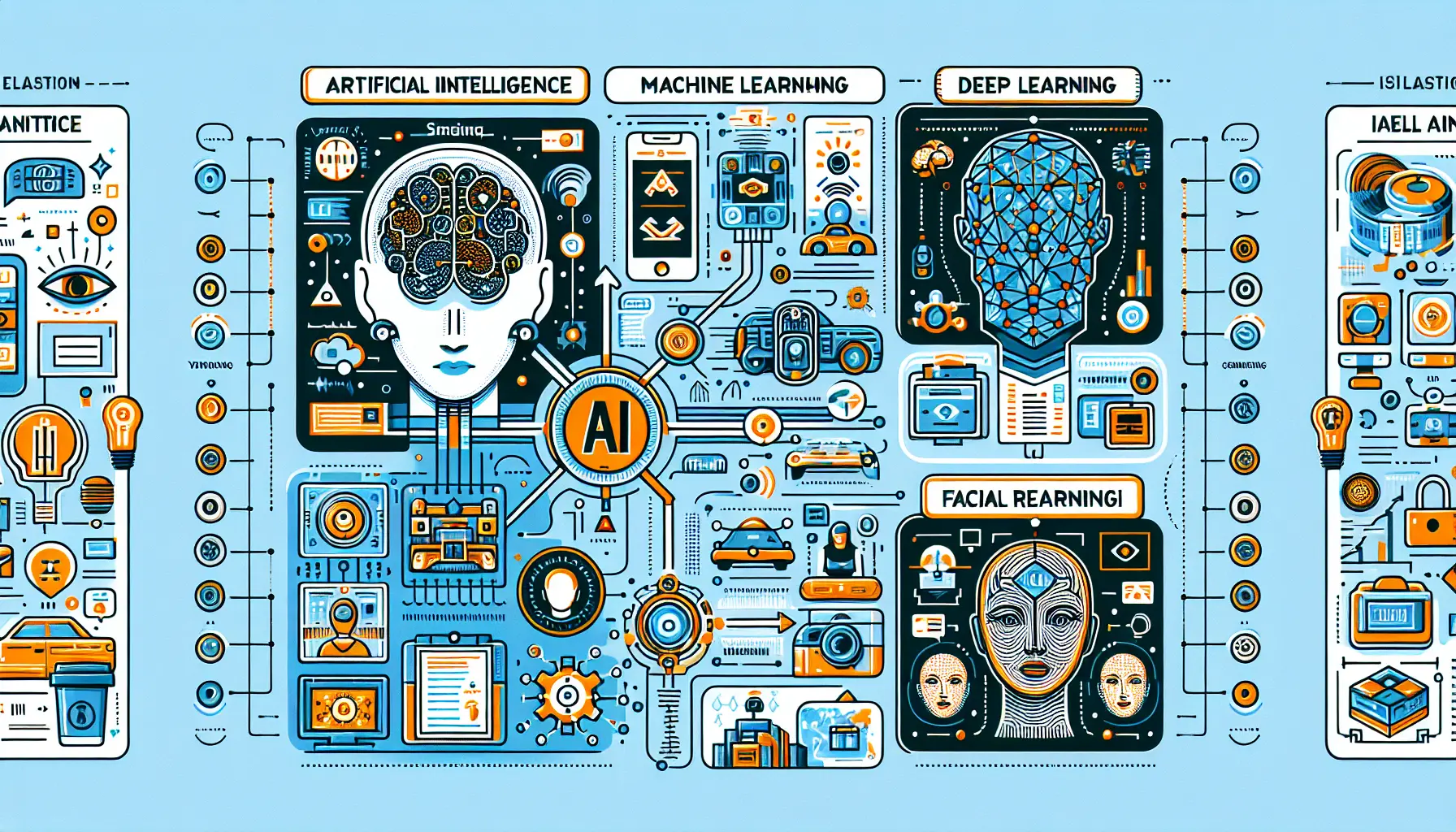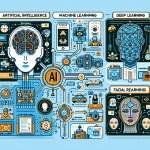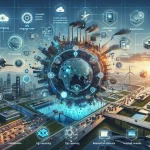
Estimated reading time: 8 minutes
Key Takeaways
- Distinct Concepts: AI is a broad field, while Machine Learning is a subset focused on data-driven learning.
- Deep Learning: A specialized area within Machine Learning that uses neural networks for complex tasks.
- Real-World Applications: AI, ML, and DL have diverse applications across industries, enhancing efficiency and innovation.
- Future Trends: Advancements in AI and ML are shaping the future of technology, including personalized experiences and automation.
Table of Contents
- The Essential Distinction Between AI and Machine Learning
- What is Artificial Intelligence?
- Understanding Machine Learning
- Deep Learning Explained
- Key Differences Between AI, ML, and DL
- Practical Applications and Use Cases
- Future Trends and Innovation
- Resources for Further Learning
- Frequently Asked Questions
The Essential Distinction Between AI and Machine Learning
Artificial Intelligence and Machine Learning often appear interchangeable in tech conversations, but they represent distinct technological concepts with unique applications. This guide clarifies the fundamental differences between AI, Machine Learning, and Deep Learning to help you understand how these technologies shape our daily interactions with smart systems. Source
What is Artificial Intelligence?
Artificial Intelligence represents computer systems that can perform tasks typically requiring human intelligence. These systems use mathematical models and logic to simulate cognitive functions like:
- Problem-solving
- Learning from experience
- Pattern recognition
- Language understanding
AI technology appears in many everyday applications:
- Virtual assistants like Siri and Alexa
- Customer service chatbots
- Smart home security systems
- Self-driving vehicles
These applications demonstrate AI's broad scope in creating systems that think and act like humans. Source Source
Understanding Machine Learning
Machine Learning functions as a subset of AI that focuses on data-driven learning. ML systems analyze patterns in data to:
- Make predictions
- Identify trends
- Improve performance through experience
ML techniques include:
- Supervised learning: Learning from labeled data
- Unsupervised learning: Finding hidden patterns
- Reinforcement learning: Learning through trial and error
Common ML applications include:
- Netflix's movie recommendations
- Email spam filters
- Credit card fraud detection
- Weather forecasting systems
Deep Learning Explained
Deep Learning represents a specialized branch of Machine Learning that uses neural networks with multiple layers. These networks process information similarly to human brain neurons, enabling:
- Complex pattern recognition
- Natural language processing
- Image and speech recognition
Real-world Deep Learning applications include:
- Facial recognition systems
- Language translation services
- Medical image analysis
- Voice recognition technology
Key Differences Between AI, ML, and DL
Understanding these technologies requires recognizing their distinct characteristics:
Artificial Intelligence:
- Broadest category encompassing all computer intelligence
- Includes both rule-based and learning systems
- Focuses on creating human-like intelligence
Machine Learning:
- Specific method within AI
- Learns from data without explicit programming
- Improves through experience
Deep Learning:
- Specialized ML technique
- Uses complex neural networks
- Requires large amounts of data
Practical Applications and Use Cases
Each technology serves specific purposes:
AI Applications:
- Smart home automation
- Virtual personal assistants
- Automated customer service Source
ML Applications:
- Product recommendations
- Market analysis
- Risk assessment
DL Applications:
- Autonomous vehicles
- Medical diagnosis
- Real-time language translation
Future Trends and Innovation
The field continues to advance with new developments:
- Generative AI creating original content
- Enhanced natural language processing
- Improved computer vision systems
- More efficient learning algorithms
Emerging applications include:
- Personalized medicine
- Climate change modeling
- Advanced robotics
- Educational technology Source
Resources for Further Learning
To deepen your knowledge:
- Online courses: Stanford AI courses, DeepLearning.AI Source
- Practice platforms: Google Colab, AWS SageMaker
- Technical documentation: TensorFlow, PyTorch guides
Start with basic concepts and gradually explore more advanced topics as you build practical experience with these technologies. Source
Frequently Asked Questions
What is the difference between AI and Machine Learning?
AI is a broad field that encompasses various technologies, while Machine Learning is a specific approach within AI focused on data-driven learning.
What are some real-world applications of Machine Learning?
Machine Learning is used in applications such as recommendation systems, fraud detection, and predictive analytics.
How does Deep Learning differ from Machine Learning?
Deep Learning is a subset of Machine Learning that uses neural networks with multiple layers to analyze complex data patterns.
What are the future trends in AI and Machine Learning?
Future trends include advancements in generative AI, natural language processing, and applications in personalized medicine and climate modeling.
Where can I learn more about AI and Machine Learning?
You can explore online courses, technical documentation, and practice platforms to enhance your understanding of AI and Machine Learning.









